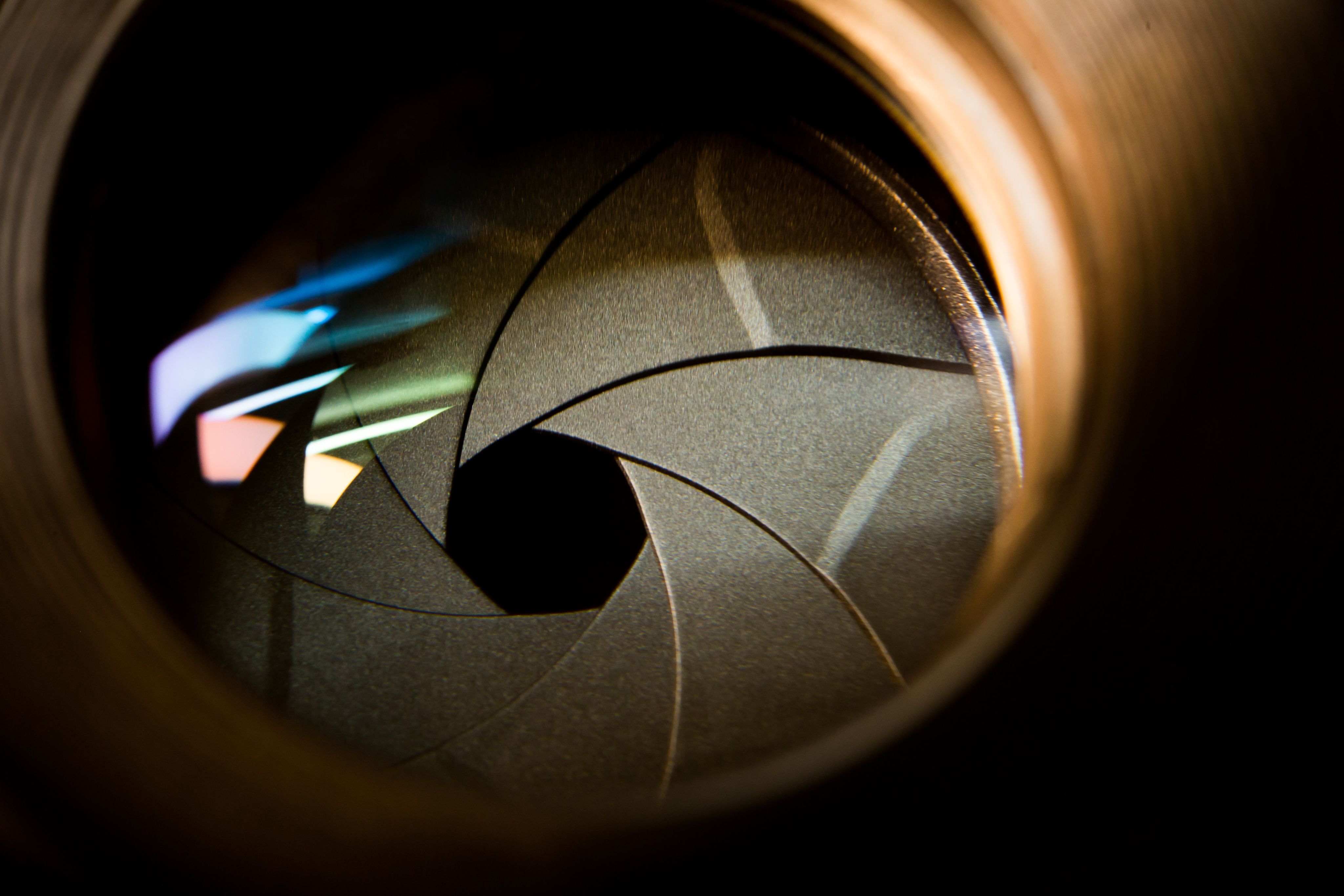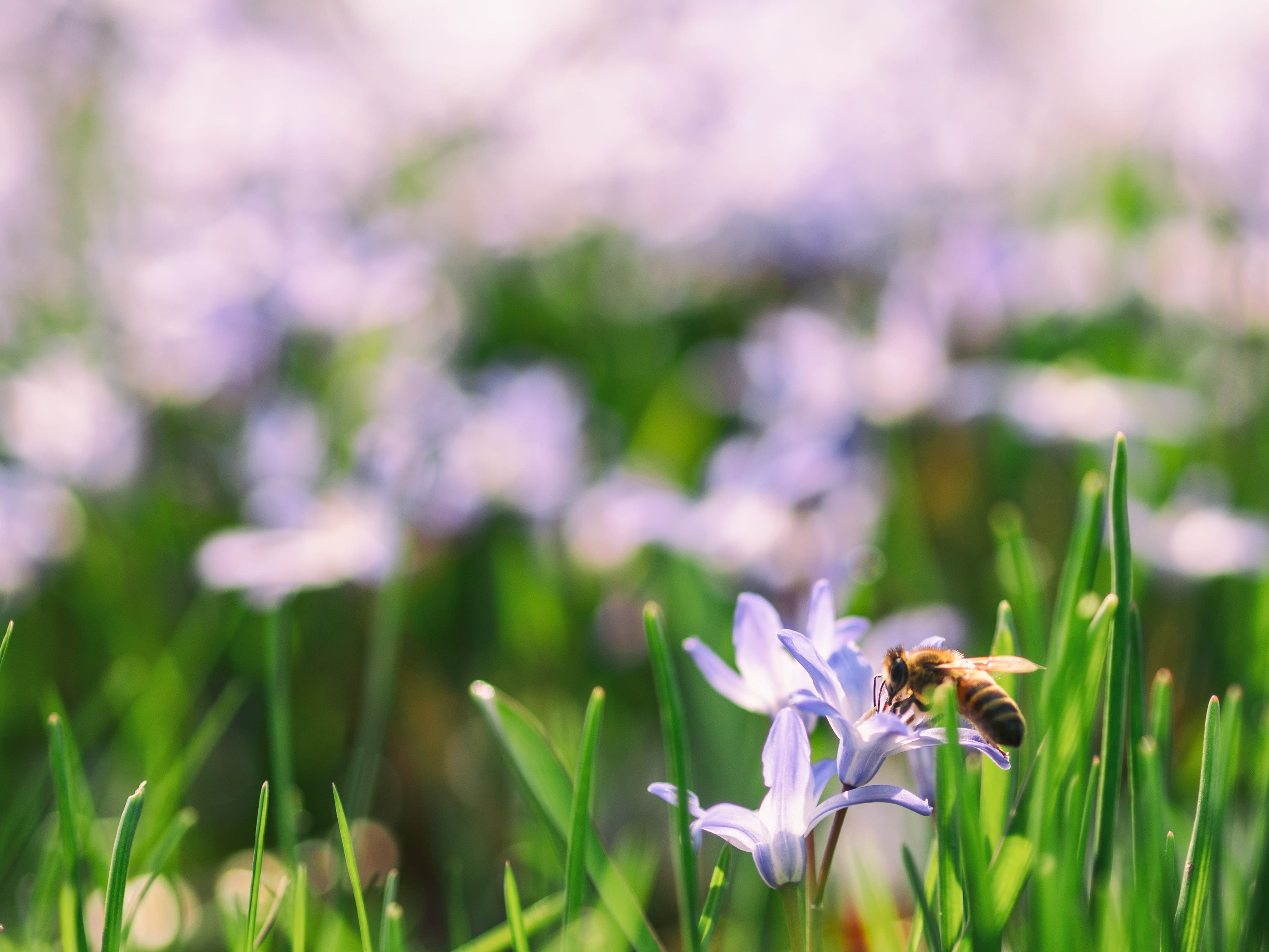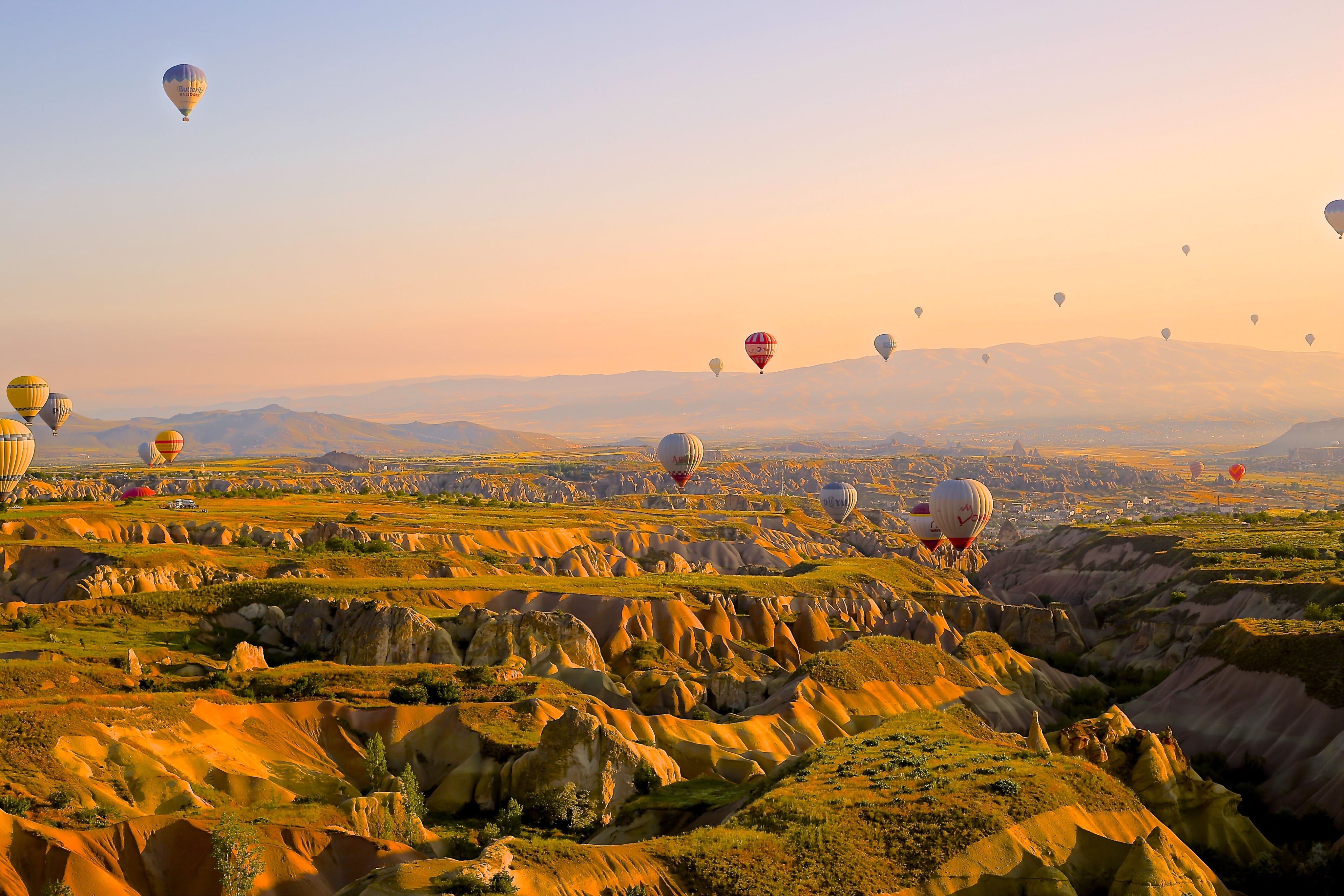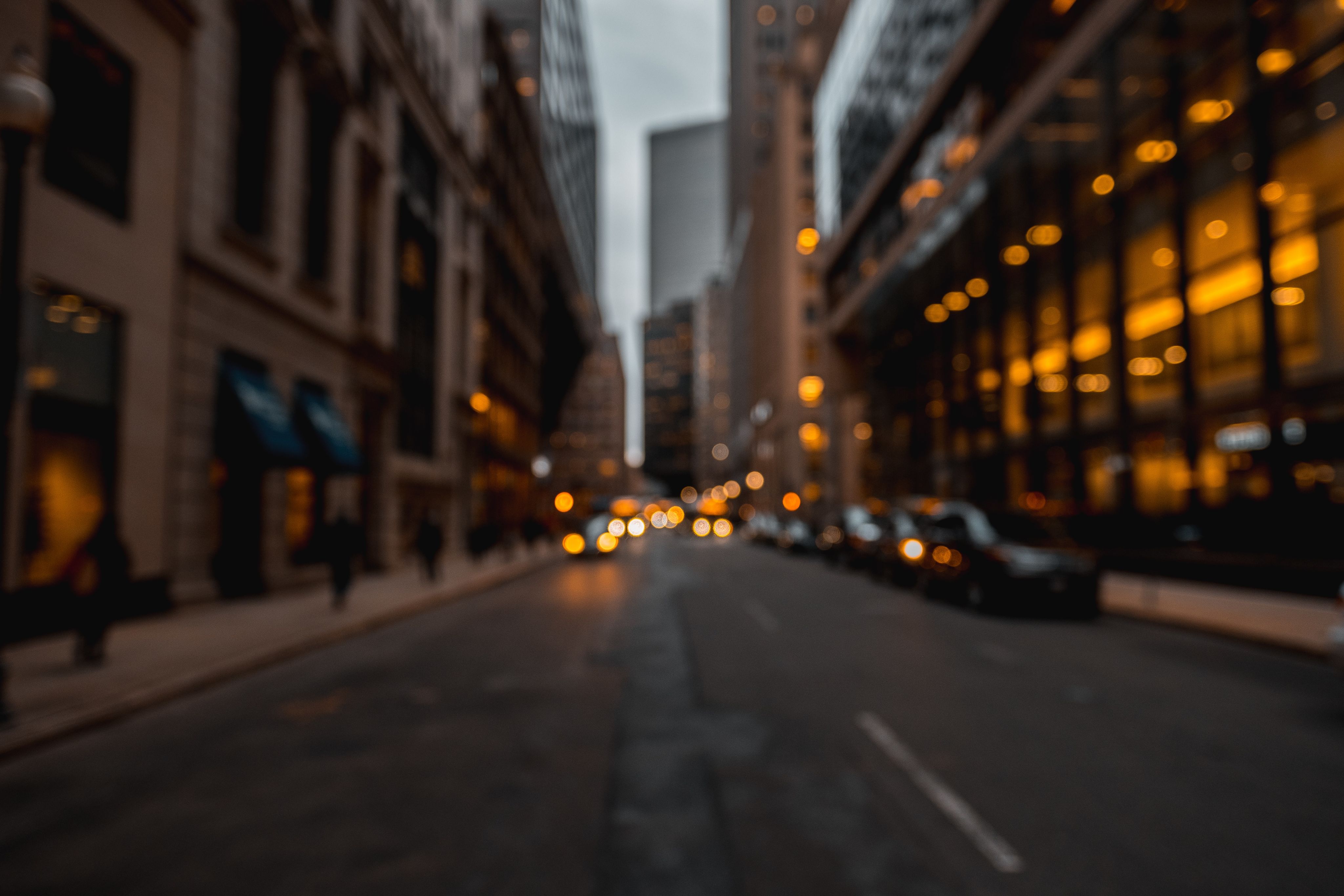A beginner’s guide to aperture in photography
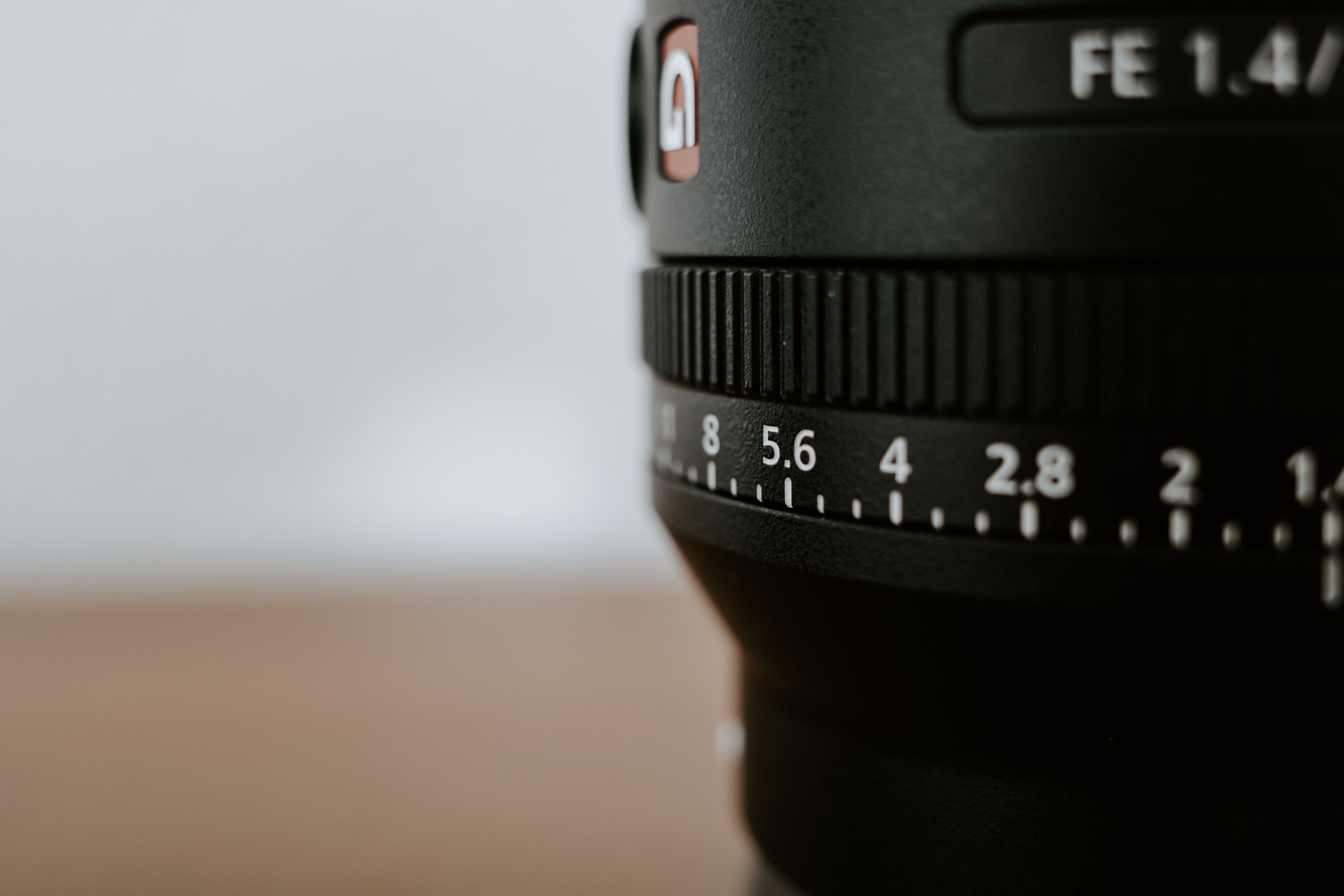
Aperture is one of three camera settings — along with ISO and shutter speed — that impact how well (or not) your photo is exposed. These three settings are often called the ‘exposure triangle.’
So what is aperture? Here’s a simple definition: Aperture is the size of the opening in your camera lens (the word is literally a fancy way of saying 'opening). This determines how much light enters your camera and hits the image sensor.
Your lens aperture settings will also impact the depth of field in your photograph. What’s more, changing your aperture will impact what you can achieve with your shutter speed and ISO settings.
It sounds complicated, and some of the terminology ('f-stop', ‘bokeh’) doesn't help! But as with most aspects of photography, it all gets a lot simpler after you start experimenting with different apertures in the real world.
Our advice: read this guide, take your camera off auto mode, and then start taking some photos of your own (maybe for your next photo essay). It might be worth bookmarking this page, taking some photos, and then coming back for another read.
We'll cover:
- How aperture works in photography
- What does the f-stop number mean?
- How aperture affects depth of field
- What is the best aperture setting?
- Aperture and shutter speed
- Aperture and ISO
- Aperture and lens size
- Aperture and diffraction
- Aperture and bokeh
- How do I adjust aperture on a DSLR camera?
- What is aperture priority mode?
Start creating with Shorthand
It's the fastest way to publish beautifully engaging digital magazines, reports, internal comms, and more.
What is aperture in photography?

Here’s the simple definition: Aperture is the size of the opening in the lens through which light passes.
It is one of the most important concepts in digital photography, yet aperture is often misunderstood.
As you might expect, the larger the aperture, the more light that enters the camera. This is important because it allows you to control exposure.
Photo by Wan San Yip on Unsplash
Photo by Wan San Yip on Unsplash
Unfortunately, it's a bit more complicated than that!
First, aperture controls the depth of field in your photograph. What is depth of field? It’s the distance between the nearest and furthest objects in a scene that appear ‘sharp’ in an image. The larger the aperture, the shallower the depth of field and the smaller this distance will be. This can be useful for isolating a subject from its background.
Second, exposure isn't only set by your aperture. Your shutter speed and ISO settings also affect exposure, and you'll need to do some trial and error to figure out how to get the exposure you want. That’s why people call these three settings the ‘exposure triangle'.’
It's important to understand that aperture is not a setting on your camera, but rather a characteristic of your lens. The aperture is determined by the physical size of the diaphragm, which can be changed by swapping out lenses or adjusting a zoom lens.
What to learn more? Read our guide to noise in photography.
What does the f-stop mean?

Now, let's tackle another confusing aspect of aperture: The F-stop.
Aperture is measured in an f-stop number. The lower the f-stop number, the more open the aperture is and therefore more light enters your camera. The higher the f-stop number, the more closed down (or smaller) the aperture is and less light enters your camera.
That's the simple definition. Now for the complex one. 😬
The f-stop number is calculated by dividing the focal length of the lens by the diameter of the aperture. For example, if a lens has a focal length of 50mm and an aperture diameter of 25mm, the f-stop would be 2 (50/25).
Generally speaking, a higher f-stop number will result in a photo with a small area in focus and a large area out of focus. On the flip side, a small f-stop number will result in a photo with a large area in focus and a small area out of focus.
Most DSLR cameras from companies like Nikon and Canon will have a lower f-stop number (or maximum aperture) of f/1.4. This a very wide aperture opening, and will let in a lot of light.
The smallest common aperture (or minimum aperture) is typically f/32.0, which won't let in much light at all.
How aperture affects depth of field

Depth of field (DOF) is the distance between the nearest and farthest objects in a scene that have crisp details and no unintentional blurring (otherwise known as 'sharp'). It's important to note that depth of field is not an absolute value, but rather it is relative to the distance between the camera and the subject.
The size of the camera aperture (the f-stop number) determines the amount of depth of field in an image. A small aperture (large f-stop number) results in a large depth of field, while a large aperture (small f-stop number) results in a shallow depth of field.
Here's an example to illustrate how this works. Let's say you're taking a picture of a flower garden with a 50mm lens at f/8. The depth of field would be approximately 2 feet (0.6 meters). This means that objects within 2 feet of the camera would appear sharp, while objects beyond that would start to become blurry.
A photo of a bee with a shallow depth of field by Aaron Burden on Unsplash
Photo by Aaron Burden on Unsplash
Now let's say you take the same picture with the same lens, but at f/2. The depth of field would be reduced to about 0.6 feet (0.2 meters). This means that only objects within 0.6 feet of the camera would appear sharp; anything beyond that would be significantly blurred.
What is the best aperture setting?

As we've explained, changing the aperture can have a big impact on your image. But how do you know which aperture to use? Well, it depends on the look you're going for.
If you want everything in your image to be sharp and in focus, then you'll want to use a small aperture (large f-stop number). This is often desirable for landscape shots, group photos, and other situations where you want everything to be sharp.
Photo by Daniela Cuevas on Unsplash
Photo by Daniela Cuevas on Unsplash
If you want to isolate your subject from the background (or foreground), then you'll want to use a large aperture (small f-stop number). This is known as shallow depth of field, and it's often used in portraits and close-up shots.
Aperture and shutter speed

So, we’ve talked about aperture and f-stop. But as we mentioned above, changing your aperture settings will likely require you to make some adjustments to the other settings in the exposure triangle.
Let’s tackle shutter speed first. Now, what is it, exactly? Shutter speed is the amount of time the shutter is open and exposes the camera's sensor to light. The longer the shutter is open, the more light that enters the camera.
The size of the aperture (the f-stop number) also determines the shutter speed that's needed to achieve a correct exposure. A small aperture (large f-stop number) will require a longer shutter speed to achieve the correct exposure, while a large aperture (small f-stop number) will require a shorter shutter speed.
So as you can see, changing the aperture has an impact on both the depth of field and the shutter speed. It's important to understand how these two factors work together to create the right exposure for your photograph.
Reading this post won’t help you master it, though. The best bet is to grab your photo and start experimenting in the real world!
Aperture and ISO

What about the third part of the exposure triangle, ISO? ISO is a measure of the camera's sensitivity to light. The higher the ISO number, the more sensitive the camera is to light. This means that less light is needed to achieve a correct exposure.
Read more in our beginner's guide to ISO in photography.
That’s right: you can change the amount of light (aperture) and the sensitivity to light (ISO). As you can imagine, changing one of these settings is likely to impact how the other works.
The size of the aperture (the f-stop number) also determines the ISO that's needed to achieve a correct exposure. A small aperture (large f-stop number) will require a lower ISO setting, while a large aperture (small f-stop number) will require a higher ISO setting.
For example, let's say you're taking a picture of a person in low light with a 50mm lens at f/2. The lowest ISO setting you could use to get a correct exposure would be 3200. If you wanted to use a lower ISO setting, you would need to use a larger aperture (smaller f-stop number). Conversely, if you wanted to use a higher ISO setting, you would need to use a smaller aperture (larger f-stop number).
Aperture and lens size

The size of the aperture (the f-stop number) also determines the minimum focus distance of the lens. The minimum focus distance is the closest distance that the lens can focus on an object and still produce a sharp image.
Many professional photographers use a prime lens for this reason. A prime lens is a camera lens with a fixed focal length. In other words, it can't zoom in or out like a zoom lens can.
As a result, prime lenses typically have a wider maximum aperture than zoom lenses, making them well-suited for low-light photography and achieving shallow depth of field effects. The wider aperture also allows for greater control over the placement of focus within the frame.
Prime lenses are often used for portrait photography, who want to capture clean, sharp images with minimal distortion. Prime lenses are also often used by landscape photographers. While they generally require the use of a tripod or other stabilising device due to their narrow field of view, prime lenses offer a number of advantages that make them a popular choice among professional photographers.
Aperture and diffraction

Diffraction is an optical effect that occurs when light waves pass through a small opening. The result is a loss of sharpness in the image.
The size of the aperture (the f-stop number) also determines the amount of diffraction that occurs. A small aperture (large f-stop number) will cause more diffraction, while a large aperture (small f-stop number) will cause less diffraction.
For example, let's say you're taking a picture of a person with a 50mm lens at f/2. The amount of diffraction would be minimal. If you wanted to use a smaller aperture (larger f-stop number), the amount of diffraction would increase.
Aperture and bokeh

Bokeh is a technique in photography that is used to create a soft, blurred background. This effect is achieved by using a large aperture and keeping the subject in focus while the background is out of focus.
Bokeh can be used to create a dreamy or romantic look, or to make the subject stand out against a busy background. It is also often used in portraiture to help the subject stand out from the background. Bokeh can be created with any type of camera, but it is most commonly associated with DSLRs and mirrorless cameras.
Bokeh-style photo by Osman Rana on Unsplash
Photo by Osman Rana on Unsplash
How do I adjust aperture on a DSLR camera?

On a DSLR camera, adjusting the aperture is as simple as turning a dial. This adjusts how wide open the lens is, and therefore how much light is allowed in. As we’ve mentioned already aperture is measured in "f-stops", with larger numbers representing a smaller aperture. For example, an aperture of f/22 would be much smaller than an aperture of f/2.8.
Remember, when adjusting aperture, it's important to keep in mind the shutter speed and ISO settings as well. If you need to increase the shutter speed to prevent blur, you'll need to decrease the aperture to compensate. And if you need to increase the ISO to get a good exposure, you'll need to decrease the aperture as well.
What is aperture priority mode?

Aperture priority mode allows the user to select the aperture while the camera sets an appropriate shutter speed. Aperture priority is often abbreviated as "A" or "Av" on camera mode dials.
This mode is also sometimes called "semi-manual" mode because the photographer still has some control over the exposure. For example, if the scene is very bright, the photographer can choose a small aperture to avoid overexposing the image. Conversely, if the scene is darker, a larger aperture can be used to let in more light. Aperture priority is a popular mode for many types of photography, including portrait, landscape, and still life. It is also a good choice for beginners who are not yet comfortable with manual mode.
Conclusion

That's our post! As you can see aperture is an incredibly important aspect of digital photography. Some of the jargon isn't easy to understand, and probably won't become second-nature until you've had some practice out in the world.
So that's what you should do next! Explore the different aperture settings and see what sorts of photos you produce.


